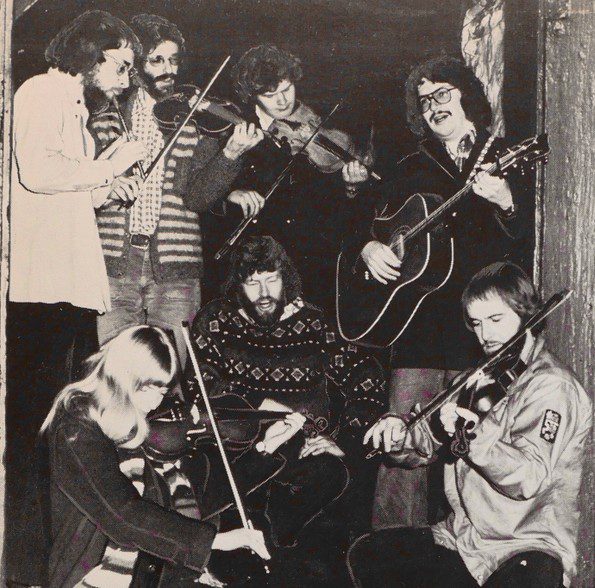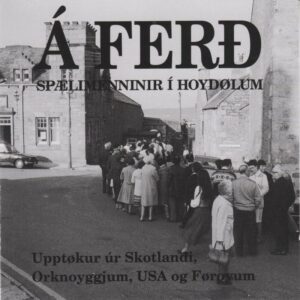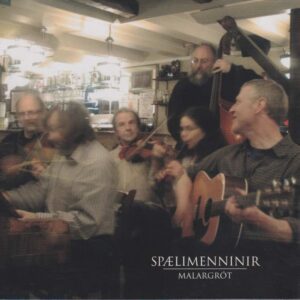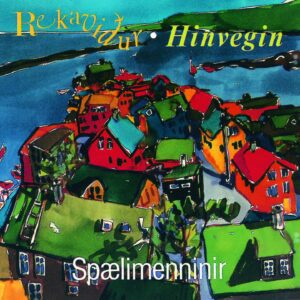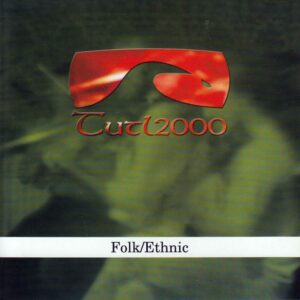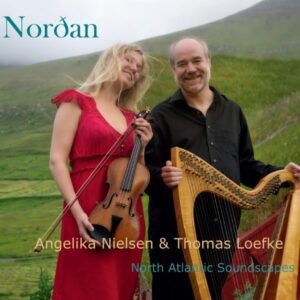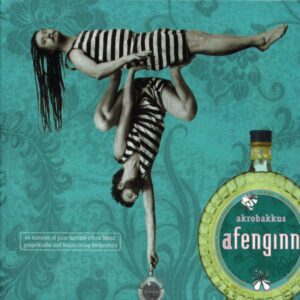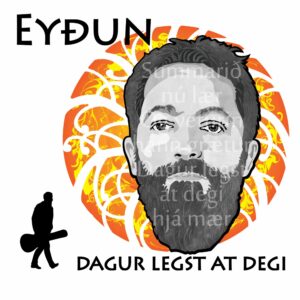Description
About Spælimenninir i Hoydølum
The name means “the fiddlers, or players, from Hoydalar” – so called because the group was founded in the secondary school in Hoydalar just north of Tórshavn, in the autumn of 1974. Kristian, Hans Ole and Maggi have been playing in the group since the beginning; Alistair joined the band in the summer of 1976; Janne, Christina and Jógvan shortly afterwards.
Former members who do not appear on this record include: Thorkild Rose from Krusaa in Denmark, on clarinet; Asbjorn Strom from Tvøroyri in the Faroes, on accordion; Keld Lund from Copenhagen, on string bass; Kolbein Simonsen from Tórshavn, on electric bass; plus a few dozen others who have come up and played with them on some occasions.
Spælimenninir have been playing in the Faroes, mostly at weekend dances in towns and villages throughout the country. But can hardly call themselves a “Faroese” band, as regards either personnel or music. Although the Faroes have their own lively tradition of vocal music and dance dating back to the Middle Ages, there is no tradition of instrumental folk music.
The material of Spælimenninir is a mixture of what they know from various parts of Scandinavia and Britain. This record tries to illustrate some of the separate styles and traditions that different members of the group have brought with them; it also features a few of the more raucous dance-hall numbers that they all play together. The latter is not meant to please folk-music purists. If the Danish tunes have a Swedish lilt to them and Bellman songs come out as Scottish jigs, all the better.
Tracklist:
The tunes:
1. Auchdon House: Originally a Scottish dance, a strathspey; in Shetland it came to be played as a wedding march, as played here.
2. Roselil: Danish song.
3. Halling: From Gudbrandsdal in Norway.
4. Bellman’s Jig: Bellman’s “Så lunkar vi så småning om” played as a Scottish jig.
5. Polska: From Bjärkedet in Sweden, from the fiddling of Kristian Oskarsson.
6. Dainty Davie: A 17th century Scottish song. David Cherrytrees was a minister who was once chased by some soldiers for holding an illegal church service. He ran and hid in a young woman’s bed; this satirical song is supposed to be her account of the incident.
7. Katrinevalsen, and
8. Brondums Hopsa: A waltz and a “hopsa” from Himmerland in Denmark.
9. Majvisa. A song from Skåne in southern Sweden. It was the tradition in May for young people to go round from door to door, asking for food and drink and singing this song.
10. Læg di maw: A “fynbo” dance from Denmark.
11. Lille gubben uppå Tallebacken: A “vispolska” from Dalarna, Sweden.
12. Jeg går i tusind tanker: A “sønderhoning” dance from Sønderho on the island of Fanø on the west coast of Jutland. The dance is unique – something like a polska, but with a different rhythm. In Sønderho, as in many other places in Denmark, dance tunes were sung or lilted when there were no musicians to play them.
13. The Hen’s March to the Midden: From Shetland. The second part of the tune is supposed to imitate the hen’s walk.
14. Polska: Swedish, from Are.
15. Pindsvine-Reinlender: Known in both Sweden and Denmark. This is the Swedish version.
16. Stockholmslätan: A fairly recent “ganglat” or walking-tune, composed in the old Dalarna tradition.
17. Reinlender: Improvised by Janne in Milson’s studio.
18. Reinlender: Norwegian, from Voss.
19. Grai kópur av Súluskeri: An old ballad from Orkney, “The Grey Selkie o Sule Skerry, translated into Faroese by Gunnar Hoydal. The legend of the seal people is found in different versions in all the Atlantic islands from Iceland to Ireland, and also in Norway.
Released on the following formats:
As LP, CD and digitally on all major platforms (Spotify, Apple Music, etc.). You can check it out with this link: https://bfan.link/spaelimenninir-i-hoydolum




